How Robotics Are Changing the Face of Modern Manufacturing
Discover how robotics are revolutionizing modern manufacturing in our comprehensive guide. Learn about today's latest developments.
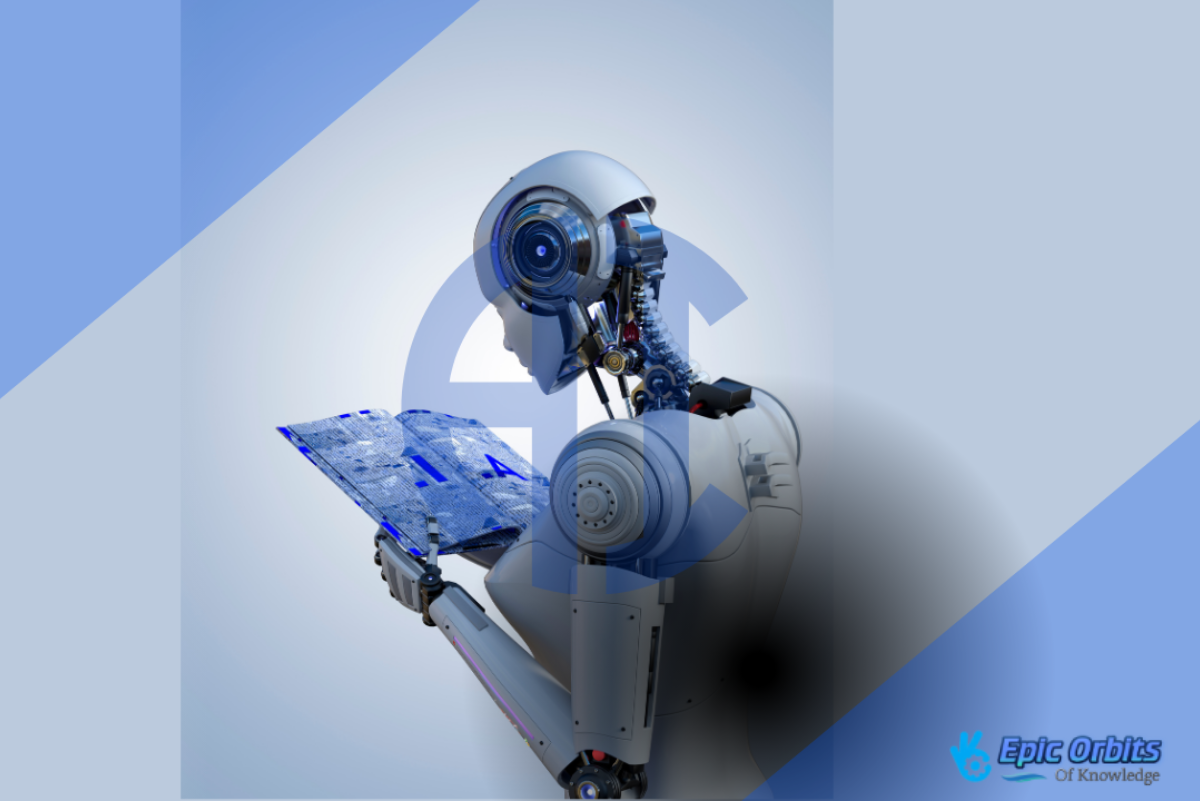
Driven by the incorporation of robotics that transform production processes, the industrial environment is changing significantly. Unquestionably, automation has changed industry, with about 3 million industrial robots running all across the globe.
Thanks to developments in artificial intelligence and machine learning, the application of robots in manufacturing has changed from simple automated activities to sophisticated systems capable of complicated decision-making and adaptation. This change is helping companies to save expenses, maximize operations, and raise product quality.
With companies like automotive, electronics, and pharmaceuticals using robotics to remain competitive, its impact on production is becoming ever more significant as this technology develops.
Robotics in Manufacturing: Their Evolution
From basic mechanizing to sophisticated automation systems, robotics has transformed the industrial industry. From the mechanical advances of the Industrial Revolution to today's smart factories reflecting Industry 4.0 ideas, robots' path in manufacturing encompasses significant technological advancements.
The development of robots in industry mirrors more general technical advancement in engineering, materials science, and computer science. While current robotics systems interact with more general digital ecosystems and information networks, early industry automation concentrated on the mechanization of basic operations. For instance, General Motors' 1961 launch of the first Unimate robot marks a turning point in industrial history because it shows the possibility of programmed robots to carry out repeated jobs.
Many important turning points have molded the development of manufacturing-based robotics. George Devol developed the first industrial robots, known as Unimate, after William Grey Walter's 1948 invention of the first autonomous robots. It started running at a General Motors factory in 1959, and by 1961, the first robotic arm was lifting and stacking metal pieces under a program for around 200 actions over time at a GM facility. Designed in 1972, Shakey—the first AI-powered robot—by the Stanford Research Institute advanced the discipline of robotics in industry.
Robots, from isolated machines to linked systems interacting with other manufacturing equipment and corporate software, have evolved with the move to Industry 4.0. With robots becoming ever more important to current production processes, this transition marks a basic change in how people and machines interact in factory settings.
Knowledge of Contemporary Robotics Technology
The development of contemporary production depends much on robotics. Robotics is the design, development, and operation of robots—programmable devices able to perform tasks semi-autonomously or independently.
Programming, interaction with their surroundings, and degree of autonomy define modern factory robots. One of the main differences between a robot and simpler automated equipment is its capacity to be reprogrammed for various jobs and to adapt to changing conditions.
These robots' sophisticated control systems help them make choices depending on sensor inputs, thereby improving their autonomy and adaptability in challenging production settings.
- Programmability gives task execution flexibility.
- Robotic performance of a range of activities depends on physical contact with the surroundings.
- The degree of autonomy determines the level of human involvement needed.
Combining mechanical engineering, electrical engineering, computer science, and, increasingly, intellect via artificial intelligence and machine learning, robotics is naturally multidisciplinary.
Knowing current robotics calls for an understanding of many technical fields, including kinematics, dynamics, and control theory. The combination of these fields generates special industrial application innovation possibilities as well as obstacles.
Including components from cognitive science and human factors engineering helps to promote human-robot cooperation, hence enhancing the integration of robots in production environments.
Fundamental elements of manufacturing robotics
Three fundamental components define the capacity and efficiency of every industrial robot. These parts cooperate to let the robot carry out its desired functions with efficiency.
1. mechanical building and design
Since it affects the reach, payload capacity, and accuracy of a factory robot, its mechanical architecture is very vital. Customizing the design to the specific activities the robot will perform enables efficient interaction with its surroundings.
2. Power Systems and Electrical Components
The functioning of industrial robots depends critically on electrical components like motors, actuators, and power management systems. The power system has to balance operating length, energy density, and safety issues. Lead-acid batteries are now quite popular because of their safety and extended shelf life; other kinds, such as silver-cadmium batteries, have benefits in terms of weight and size.
| Battery Type | Characteristics | Advantages | Disadvantages |
| Lead-Acid | Safe, long shelf life | Reliable, cost-effective | Heavy, bulky |
| Silver-Cadmium | Smaller, lighter | High energy density | More expensive |
Technology and Control Systems
The “brain” of the production robot, the software and control systems, directs its motions and decision-making actions. Modern robots have advanced control systems that allow real-time adaptability to varying production environments. Improvements in AI-enhanced control systems are increasing the production robot capabilities.
Reliability, safety, and performance of production robots in challenging industrial contexts depend on the seamless integration of these fundamental components.
Types of robotics Changing Industry
Driven by different kinds of robots meant to increase output and efficiency, the industrial scene is changing significantly. The deployment of many robotic systems, each customized to certain uses and situations within the manufacturing process, defines this change.
1. Mechanical Robotic Arms
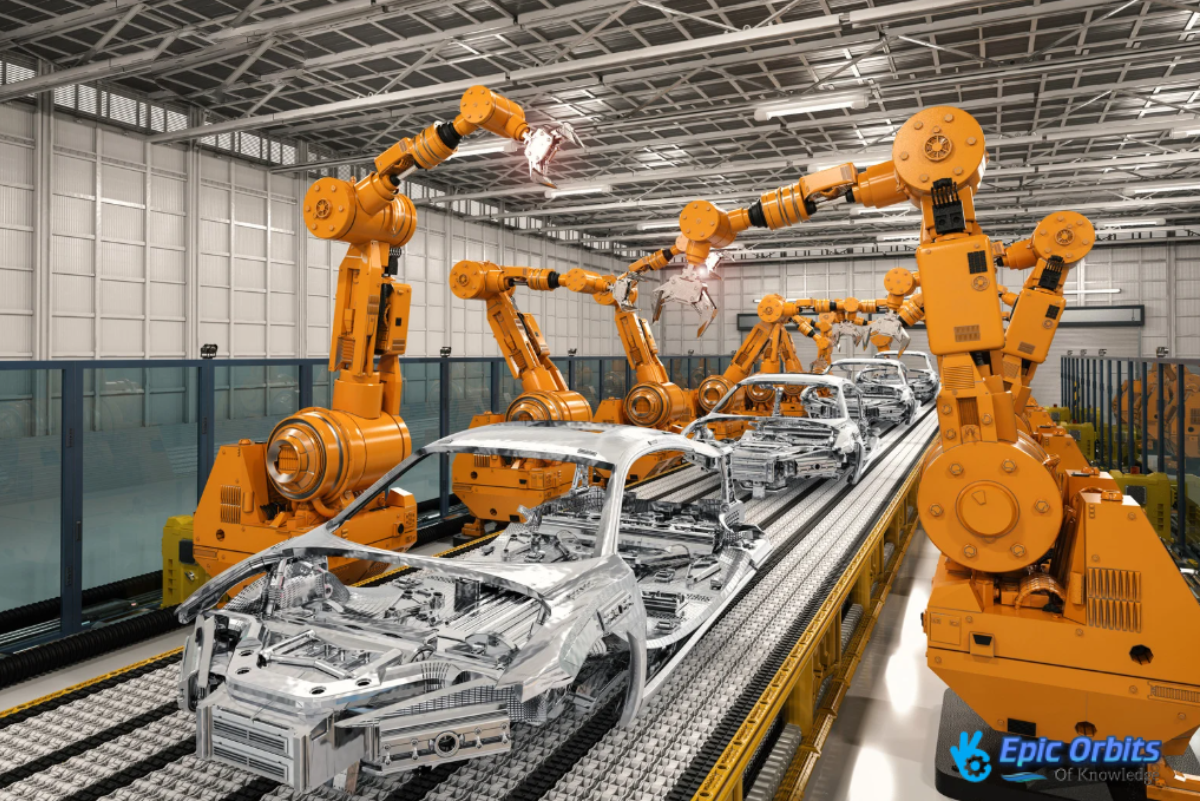
From welding to assembly and material handling, industrial robotic arms remain the backbone of production automation as they provide outstanding speed, accuracy, and strength for use. These robots, designed to handle large objects while moving quickly and precisely, are ideal for assembly lines where production is critical.
1. Cobots, or collaborative robotics
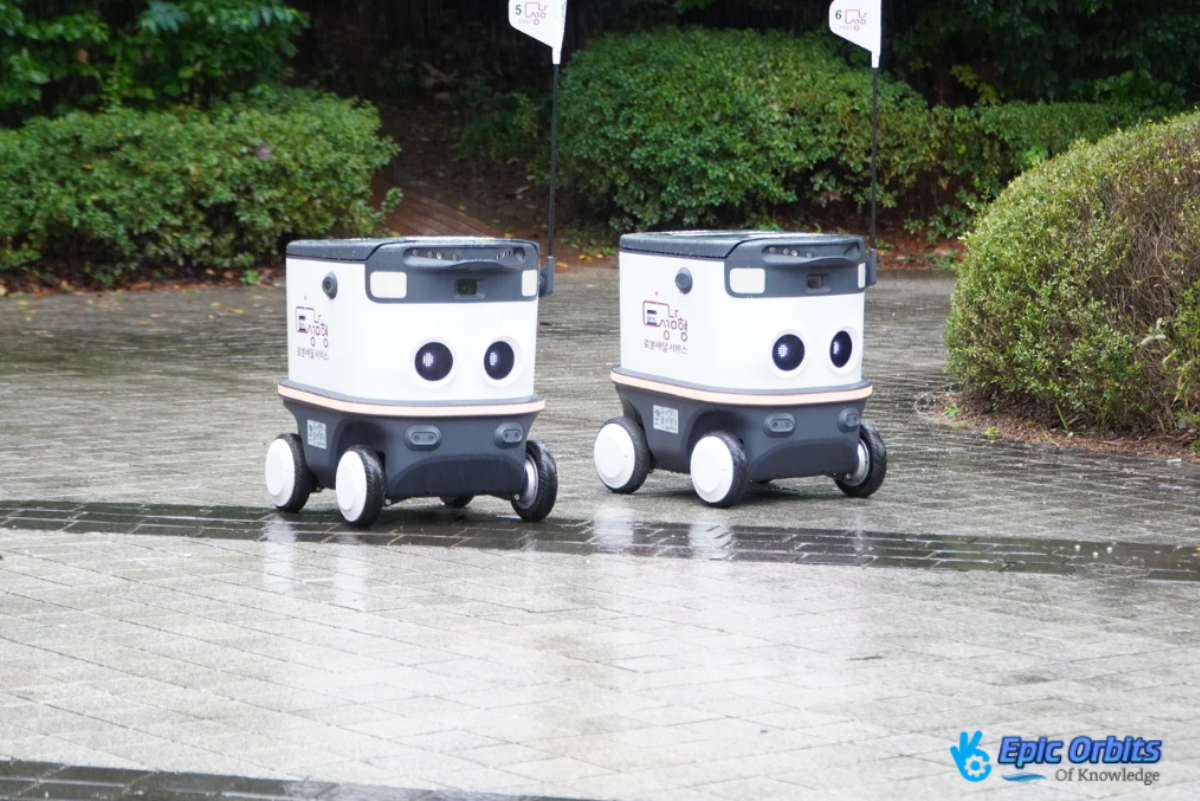
Collaborative robots, also known as cobots, embody a major change in factory robotics. Using sensors to stay aware of their surroundings and conduct gradual motions, cobots—designed to operate securely alongside people without the need for safety cages or barriers—cease operations when they encounter obstacles. By handling simple tasks, cobots allow humans to focus on more complex projects.
3. Mobile robotics with autonomy (AMRs)
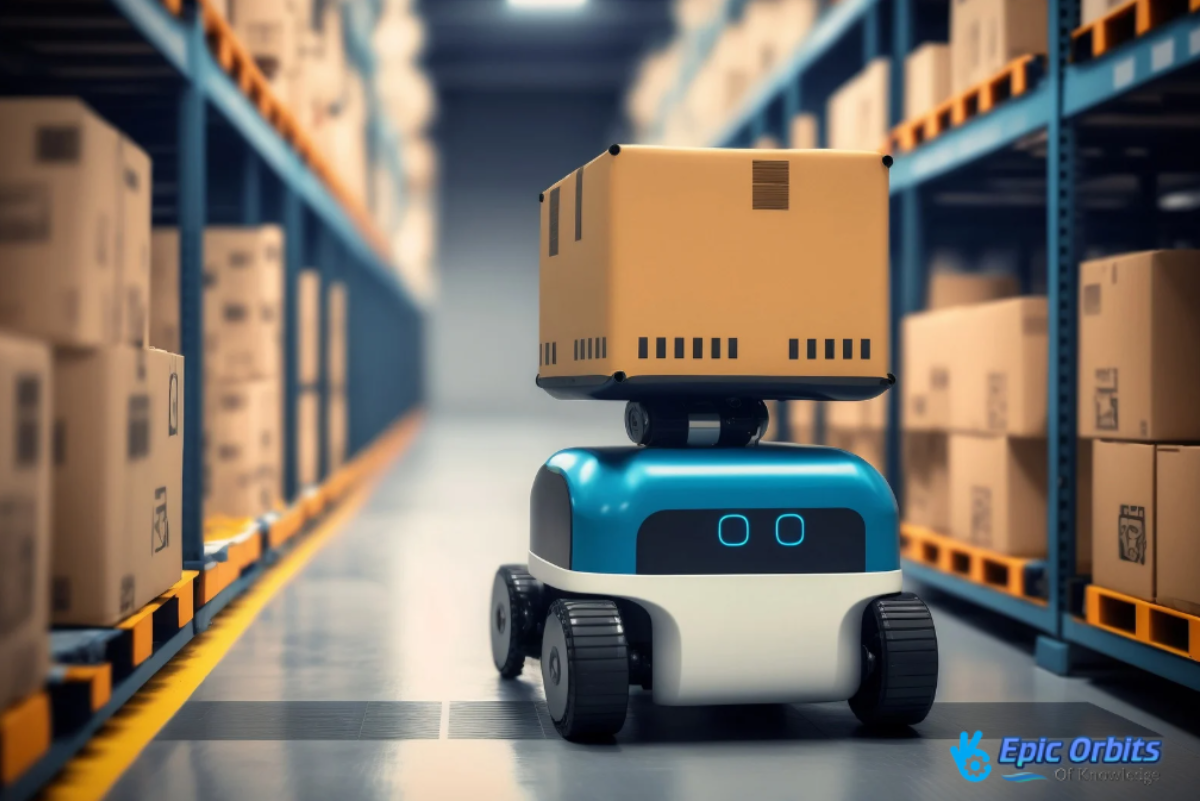
Inside industrial companies, autonomous mobile robots (AMRs) are revolutionizing internal logistics. By navigating dynamically to move resources and completed objects across manufacturing settings, these robots improve productivity and save labor costs.
4. Specific Manufacturing Robots
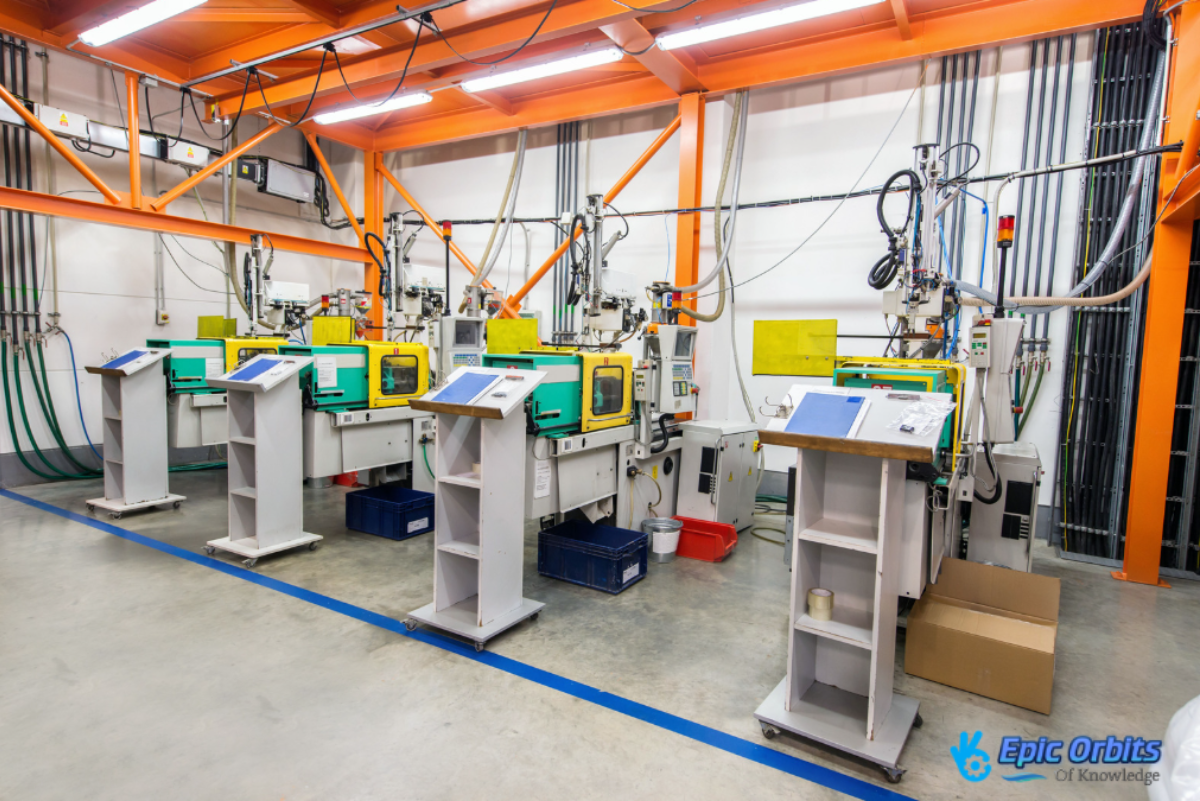
Painting robots, inspection robots, and highly customized machines made for industry-specific uses like semiconductor fabrication or pharmaceutical manufacture include specialized manufacturing robots. Regarding cost, adaptability, simplicity of use, and suitable applications within the production process, every kind of robot has clear benefits.
Factors such as required accuracy, payload capacity, cycle time requirements, and human nature determine the most suitable type of robot for a specific industrial application. The need for more flexibility and adaptation in industrial systems drives the development toward multifarious and readily reprogrammable robots.
In manufacturing robotics, sensing and perception
Robots' ability to sense and perceive their surroundings is transforming modern production techniques. Advanced sensors let robots adapt to changes and carry out jobs with more accuracy by gathering information about their environment.
Effective interactions between robots and their surroundings depend on sensing technology. This topic covers object recognition, anomaly detection, and negotiating challenging production settings.
- Vision Systems and Image Processing: Robots cannot recognize things, check quality, or guarantee appropriate assembly without vision systems and image processing technology. These technologies allow robots to move and interact with their surroundings with ever more complexity.
- Sensing Touch and Force: Robots using touch and force sensors can detect collisions and handle sensitive parts with suitable pressure. Perfect assembly procedures and secure human-robot cooperation depend on this tactile input.
- Technologies for Environmental Awareness: From proximity sensors to temperature sensors to audio sensors, environmental awareness technologies provide robots with complete knowledge about their operating surroundings. Such knowledge lets robots run consistently in demanding industrial settings.
| Sensing Technology | Functionality | Benefits |
| Vision Systems | Identify objects, inspect quality | Improved precision, quality control |
| Touch and Force Sensing | Handle delicate components, detect collisions | Precise assembly, safe human-robot collaboration |
| Environmental Awareness Technologies | Proximity, temperature, acoustic sensing | Reliable operation in challenging environments |
Combining many kinds of sensors generates strong perception systems capable of consistent operation under different industrial environments. Sensor miniaturization and processing capability have extended industrial robots' perceptual range.
Manufacturing robots' artificial intelligence and machine learning
Manufacturing is being transformed by the way artificial intelligence (AI) and machine learning (ML) are being included in production robots. Robots are now able to do jobs formerly thought too difficult or variable for automation thanks to this mix of technology.
By improving robot capability and allowing fresh uses, artificial intelligence and machine learning are revolutionizing factory robotics. By means of better sensing, decision-making, and adaptability, artificial intelligence improves robot capacities. AI-powered vision systems, for example, let robots very accurately check items for flaws.
1. Improving AI-Based Robot Capabilities
Manufacturing robots' capabilities are being greatly improved by artificial intelligence. Robots can now identify trends in complicated data by using deep learning algorithms, which facilitates more advanced visual inspection and anomaly detection. In quality control, this capacity to spot flaws early in the manufacturing process is very vital because it may save time and money.
AI also lets robots learn from experience and, over time, maximize their performance. By using reinforcement learning approaches, robots may enhance their performance by means of trial and error, optimizing motions and processes without explicit programming.
Manufacturing robotics is seeing major developments due to robots' capacity to see their environment and learn from experience.
2. Manufacturing Applications for Machine Learning
Applications of machine learning in industrial settings are many and significant. One important use is predictive maintenance, where ML algorithms examine data from equipment sensors to forecast when maintenance is needed, thereby lowering downtime and raising overall efficiency.
Other important uses include process optimization—where ML algorithms can find the most effective manufacturing techniques—and quality control—where ML may be used to find abnormalities and flaws.
| Application | Description | Benefit |
| Predictive Maintenance | Analyzing sensor data to predict maintenance needs | Reduced Downtime |
| Quality Control | Detecting anomalies and defects using ML | Improved Product Quality |
| Process Optimization | Identifying efficient production processes | Increased Productivity |
Robotics combined with artificial intelligence and machine learning is producing systems that can change with industrial circumstances, product specifications, and production needs. In the fast-paced production world of today, where rapid response to new needs may be a major competitive advantage, this flexibility is very vital.
IoT and lights-out manufacturing change robots.
Manufacturing automation has much more unrealized promise going forward. These advanced machines are paving the way for uninterrupted production and the integration of the Internet of Things (IoT) in the current era of industrial robots.
Robots operate in manufacturing without human intervention, thereby boosting output and reducing labor costs. Smaller enterprises might find this crucial, especially if they cannot afford the high labor costs or have a tiny production team. These tiny team robots may boost output by working together.
Moreover, linking industrial robots to IoT helps your equipment to compile data from their sensors. This improves automation and decision-making. IoT features include operational efficiency, predictive analysis, tracking, and maintenance capabilities that are revolutionary.
Let us consider how the IoT supports predictive maintenance, for instance:
- Artificial intelligence systems examine an almost limitless source of data from sensors built into your robots, identifying even the smallest indication of danger before it becomes a full-scale meltdown.
- Forget about hand checks and guessing; autopilot maintenance is constant monitoring of robotic health, facilitated by IoT-connected sensors, setting up alarms, and automatically arranging maintenance activities.
- AI predictive maintenance keeps robots operating at maximum performance by seeing any faults early on, therefore reducing expensive downtime and increasing production.
Main uses of robotics in contemporary manufacturing
Driving invention and production, robotics has become a pillar in modern industry. Robots' adaptability enables their use at various stages of the manufacturing process, from initial assembly to final packing and delivery.
Among the most venerable uses of robots in industry is assembly and production line automation. From basic pick-and-place operations to sophisticated multi-stage assembly techniques, robots can complete a broad spectrum of jobs. This procedure not only boosts output but also ensures product quality and consistency.
Robots fitted with sophisticated vision systems and sensors are very vital in quality control and inspection. Beyond human ability, they can find flaws and guarantee product consistency at rates and accuracy levels. Maintaining excellent standards in manufacturing depends critically on this application.
Robots—including autonomous guided vehicles (AGVs) and autonomous mobile robots (AMRs)—have fundamentally changed material handling and logistics. In industrial plants, these robots simplify internal transportation systems, therefore increasing efficiency and lowering personnel costs.
Applications and Industry
In hazardous environment jobs like welding, painting, and handling poisonous compounds, robots are very useful. Robots increase workplace safety by taking over these hazardous jobs, therefore shielding human workers from possible injury.
Robotics finds numerous applications in industry and is constantly evolving. The use of technologies across various production contexts increases as they become more versatile and easily available. Although other industries, including electronics, food processing, pharmaceuticals, and consumer products, are also progressively using robotic solutions, the automobile sector is still a major user of production robots.
- Two new uses are cooperative finishing techniques and micro-assembly of electrical components.
- Increasingly common are adaptive production techniques able to handle substantial product variability.
- Even more creative use of robotics technology and robots is probably going to define manufacturing going forward.
Robots should become increasingly more important in production as automation develops because they can do a greater spectrum of functions and increase productivity across many sectors.
Manufacturing's Advantages from Robotics Implementation
Including robots in their processes helps manufacturing plants reach operational excellence and develop a competitive advantage in the market. The advantages of robotics applications are many and affect several facets of manufacturing as well as general corporate performance.
Manufacturing uses of robots result in higher efficiency and output. Robots maintain constant cycle times and run faster than human processes; they operate nonstop without tiredness. This results in a higher volume of manufacturing and lower labor expenses.
Robots improve quality and consistency by ensuring perfect repeatability, eliminating human error, and maintaining exact specifications throughout manufacturing cycles. This results in reduced waste and lower quality control expenses, which contribute to overall cost savings.
By assuming hazardous, ergonomically demanding, or dangerous duties that might otherwise expose human workers to risk, the deployment of robots increases workplace safety. In addition to shielding employees from accidents, this helps to lower occupational injury costs.
When considering factors such as increased productivity, improved quality, and increased safety, the integration of robots in manufacturing offers several advantages. The function of robots should grow as firms continue to embrace and adjust to new technology, thereby improving production techniques and supporting long-term competitiveness.
Manufacturing Robotics's Difficulties and Restraints
Though groundbreaking, the incorporation of robots in production presents several difficulties. As robots proliferate in manufacturing contexts, we must successfully integrate them by overcoming several technological, financial, and implementation challenges.
Operating well in unstructured contexts is one of the main technological difficulties factory robots face. Real-world factory floors may be dynamic and unpredictable, unlike controlled environments, which calls for rapid adaptation of robots to changing circumstances. Furthermore, activities requiring exceptional dexterity or sophisticated problem-solving ability are difficult for present robotic systems.
Robots are using advances in artificial intelligence and machine learning to enhance their capabilities and overcome these challenges. Increasingly complex control algorithms and improved sensor systems enable robots to perceive their surroundings and make intelligent decisions. Moreover, the evolution of increasingly flexible and agile robotic systems is broadening their uses in production.
Beyond technological difficulties, major economic and implementation constraints impede the use of robots in industry. For many companies, the high initial outlay for robotic equipment combined with continuous maintenance expenses and the requirement for specific technical knowledge might be prohibitive. Furthermore, integrating robots into current manufacturing processes can be challenging and disruptive, requiring significant planning and implementation efforts.
Another major issue is cybersecurity, as robots get more linked to the Internet of Things (IoT) and other systems, therefore possibly exposing private information to security hazards. The first priority in maintaining the security of these systems is stopping cyberattacks that could undermine data confidentiality and manufacturing integrity.
Dealing with these difficulties calls for a multifarious strategy combining strategic planning and execution with technical creativity. Manufacturers may more fully use robots to improve production, efficiency, and competitiveness in an increasingly demanding worldwide market by knowing and minimizing these constraints.
Manufacturing's Human-Robot Relationship
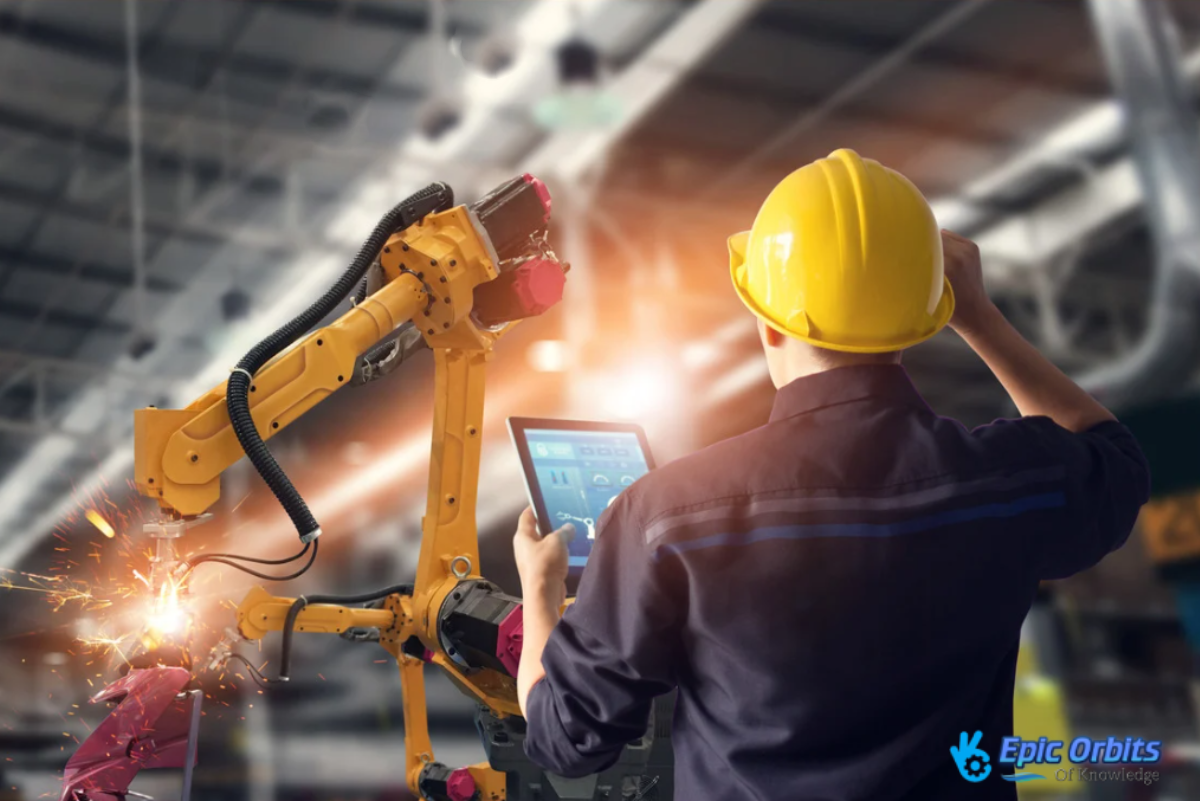
The changing nature of robotics is redefining the human-robot interaction in production and encouraging a cooperative and mutually enhancing culture. The way people and robots interact is changing greatly as robots get more advanced and are included in manufacturing processes.
The use of robots in production is about changing the workforce rather than just task automation. New abilities are needed, emphasizing robot programming, maintenance, monitoring, and integration.
While the need for qualified individuals who can operate and collaborate with robots is growing, the requirement for hand manufacturing jobs is declining. To guarantee a seamless transition, this change calls for proactive training programs and open communication on employment effects.
Collaborative settings wherein people and machines cooperate are becoming common in contemporary production. Designed to operate securely beside people, cobots—also known as collaborative robots—perform basic tasks and leave human workers to concentrate on more difficult challenges.
Using the advantages of both people and robots, human-robot teams are becoming a potent production paradigm. While robots give accuracy, endurance, and consistency, successfully operating without human assistance in certain situations, humans add creativity, judgment, and problem-solving ability.
Successful integration of robots into the workforce will rely on careful change management and the capacity to adapt to new technologies as manufacturing develops. Effective cooperation between people and machines will shape manufacturing going forward into a safer, more efficient, and more productive workplace.
Case Studies: Effective Manufacturing Robotic Implementation
Analyzing actual case studies offers insightful analysis of effective robotics adoption techniques in many different industrial industries. These cases show how robots may be fitted for problems particular to a sector and included in many production settings.
With businesses like Toyota, BMW, and Tesla proving how thorough robots' integration can change production efficiency and quality, the automobile sector reflects the most developed use of factory robotics.
Industrial robots highlight the major influence of automation, as in certain car manufacturing companies they account for more than half of the workforce.
Precision assembly robots have brought about notable changes in electronics manufacture. Companies like Foxconn have highlighted the capacity of robots to manage components too tiny for human handling by implementing automated manufacturing lines for cellphones and other consumer electronics, therefore offering a clear example of successful robotics use.
Robotics has also helped the food and consumer products industries; applications range from sophisticated food processing robots to automated packaging systems.
Two such instances show the adaptability of robots in preserving stringent sanitary standards while improving production efficiency: Flippy for burger preparation and Zume Pizza for pizza creation. They also provide great models of automation in action.
Robots' Economic Effects on Manufacturing
Robotics' multifarious economic effects on manufacturing affect many facets of production and employment. While companies and economies continue to embrace robotic technologies, understanding the financial consequences becomes essential.
1. Robotic Implementation: Cost-Benefit Analysis
Using robots in industry calls for a careful cost-benefit study. Although the initial outlay on robots might be significant, over time the advantages usually exceed the expenses. By improving output and lowering labor expenses, for example, robots may increase cost efficiencies.
Still, it's also crucial to take into account the possible negatives, like employment losses among human workers without the ability to fit a changing workplace. Furthermore, robot maintenance may be costly, and malfunctioning equipment could cause production interruptions and income loss.
We should consider not only direct labor savings but also quality improvements, reduced waste, energy efficiency, and even income gains from improved responsiveness. While their capabilities have grown, the initial investment prices for production robots have dropped dramatically, therefore boosting ROI calculations and making robotics more accessible to smaller enterprises.
2. Worldwide Competitiveness and Market Patterns
The worldwide competitiveness of industrial sectors relies increasingly on the efficient use of robots. Manufacturing automation is being heavily invested in by nations such as China, Japan, Germany, and South Korea, therefore influencing market trends and establishing new production efficiency standards. As of 2020, the world supplied 384,000 industrial robots to fulfill various manufacturing and warehousing tasks, indicating the scope of acceptance.
Market trends indicate that robots are rapidly gaining acceptance across all production industries. Job creation in robot design, integration, and maintenance, and in new sectors allowed by more effective production somewhat offsets the economic displacement impact of robotics on industrial employment.
With industrial hubs growing around robotics research institutes and integration capabilities, regional economic growth is even more connected to robotics knowledge.
Finally, the significant economic influence of robots on production affects not just particular industrial sites but also worldwide competitive dynamics and labor markets. Businesses and nations that neglect suitable degrees for manufacturing robots run major competitive losses in global marketplaces.
Future developments in manufacturing robotics
Looking forward, the field of industrial robots is about to undergo major change motivated by new technology. Future robots depend much on the development of artificial intelligence (AI). AI may be used with robots in industries to create digital twins and design simulations to assist businesses in streamlining their processes.
1. Modern Technologies and Novelties
Emerging technologies that promise to significantly increase capabilities and uses in industrial settings will help determine the direction of manufacturing robots. Among these developments are some:
- Soft robotics is designed for handling fragile items.
- Swarm robots for synchronized activities.
- AI advanced for autonomous decision-making.
- Improved methods of energy storage are necessary for increased mobility.
Digital twins combined with physical robots are generating potent new paradigms for predictive maintenance, simulation, and optimization in production environments. Edge computing technologies also enable more processing to take place straight on robots, therefore lowering latency and enabling quicker reactions to changing situations free from continuous cloud connection.
2. Forecasts for the next decade
Forecasts for the next ten years call for increased industrial decision-making autonomy, broad acceptance of humanoid robots for difficult assembly jobs, and flawless integration between robots and other production systems. As technologies once considered futuristic, like self-healing robots, quantum computing for robot control, and human-like dexterity, approach practical implementation, the distinction between science fiction and manufacturing reality becomes increasingly blurred.
Sustainability issues motivate innovations in energy-efficient robotics, recyclable robot components, and low-impact manufacturing techniques. Additionally, making robotics technology easier to access through simpler programming tools, flexible designs, and robotics-as-a-service options will likely speed up its use in manufacturing, enabling companies to perform some tasks without human help.
Robots will become more skilled at adjusting to new circumstances as their learning ability develops, thereby improving their value in challenging production conditions. Manufacturing robots has a bright future, shaped in great part by artificial intelligence and learning.
Conclusion
It is obvious from looking forward that robots will keep transforming the industrial scene. Advanced technologies—including artificial intelligence and powerful sensor systems—are extending the possibilities of robots in manufacturing settings.
Human-robot interactions are changing toward cooperative models that improve efficiency and production. Although obstacles still exist, the direction of robots in production is toward ever more complexity and acceptance. Effective companies will be those that deliberately include robots in all-encompassing digital transformation projects, therefore enhancing control over challenging jobs.
As robot technology becomes more available, its advantages will reach smaller businesses and maybe democratize sophisticated manufacturing capacity. Intelligent production ecosystems where robots and people collaborate to drive innovation and competitiveness will define manufacturing going forward.



